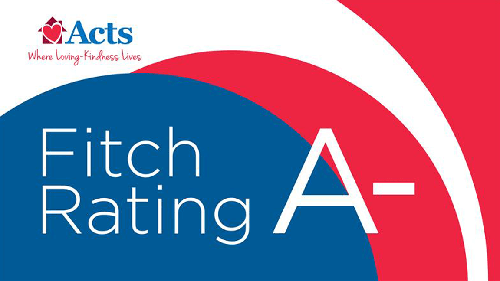Affordable Retirement Living: Where and How

You’ve finally done it: you’ve reached the finish line in the decades-long career race, and now you get to reap the rewards of retirement. It’s finally time to luxuriate in aspects of life you never could while working you nine-to-five. There’s just one complication: you need to make sure you can afford the lifestyle you’ve always dreamed.
There are many aspects to consider when it comes to affordable retirement living. But this article will focus on it quite literally, the various available living situations for retiring comfortably.
First Thing’s First: “Affordable” is Relative

No, we’re not talking about moving in with your adult children or grandchildren (though that’s certainly a possibility if you have that sort of family dynamic!). Relative, in this case, refers to how the definition of “affordable” changes from place to place. In a major metropolitan area, such as New York City or Los Angeles for example, the cost of living is almost universally higher for a comfortable lifestyle than it would be for residents of the suburbs of that city. It might be even more affordable to move out of state altogether, if the cost of living is that drastically different somewhere else.
There are a number of factors that go into cost of living. Housing costs are one of the largest, as anyone who’s been paying thousands of dollars in property taxes for decades can attest. In fact, even if you’ve paid off your mortgage years ago, the tax burden of your home, plus the general upkeep in utility costs and general maintenance, could end up being much more than you would be paying a few towns (or a few states) over. In other words, there are two major keys that can unlock the secrets of living an affordable retirement: where you live, and how you do so.
Alternative Arrangements that Maximize Your Retirement Savings
So now that we’ve established how your living arrangements are a huge facet of living an affordable retirement, it’s time to examine the different alternatives to living in your original home, often called “aging in place.” As referenced above, aging in place has a number of disadvantages in that a large, empty house is expensive to maintain. In addition to taxes there are home repairs, possibly needing to pay for lawn care and snow removal, and similar ongoing costs. It’s also not ideal if you have or there’s a chance in the future you will have physical limitations that make it difficult for you to maneuver your home, such as flights of stairs. We know your home holds sentimental value, but it might be holding you back from an optimum retirement life. Here are some great alternatives.
Family Arrangements

Mentioned in passing above, you do have the option to move in with existing family members. Siblings, cousins, children, grandchildren – whoever has extra space and is ready and willing to accommodate you can be an option.
However, living with relatives isn’t always viable. There’s not always space for yourself and/or your belongings, you may have medical needs that are incompatible with your relatives’ abilities, or you simply may not have the kind of relationship where it would be an appropriate choice. Whatever the issues may be, this means that living with family is a highly conditional choice that doesn’t always work. So what else is there?
Better, But Not Best
Another option is to downsize to a smaller home than your existing one. This solves one problem – living in a large, expensive home that is more than you need or want – and also allows you to keep your independence while simultaneously managing your retirement income better because of the smaller size.
The downsizes are that lower property taxes and less property to maintain still need to be paid and maintained. Utility bills still exist. As you age, issues with getting in and out of the bathtub or other parts of the house may still exist. You’ll need to pay realtor fees and other costs when you purchase this home. For these reasons, it is a good solution, but not the ideal solution.
The Ideal Solution
Finally, we come to what we at least find to be the most ideal solution for affordable retirement living: the retirement community. These come in a number of different varieties, such as the independent living community for active retirees, assisted-living communities for those who need additional help, and continuity-of-care communities that can provide a varied range of services, all in an environment that’s been specifically created to provide comfortable retirement living.
These situations cover home maintenance for you, along with utilities, TV and internet, and other expenses, plus typically provide access to pools, fitness centers, activities and excursions, hobbies and classes, and even dining. Continuing care retirement communities even include healthcare within your consistent monthly fee, even if your level of need increases.

Of course, retirement community costs vary greatly. They depend, as with home prices, on location. They also differ based on the amount and level of amenities provided, the type of home (single-family, townhouse, different sizes of apartments, etc.), and other pertinent details and choices. Yet even in situations where you may be quoted a higher price tag for a specific community with specific amenities and capabilities, the overall costs for the length of your retirement may very well be comparable or even less expensive than they would be if you paid for these services separately in your own home (and give you significantly more independence than if you lived with a family member). It’s this combination of services, ranging from landscaping, utilities, repair and maintenance, activities and safe independence, and even healthcare and beyond, that make these types of living arrangements so affordable and pleasurable in the long run.
The Final Word on Affordable Retirement Living
No two retirees are identical. What works for you might not work for someone else, as everyone’s personal circumstances are different. Yet it’s still possible to have an affordable and enjoyable retirement, especially if you leverage your retirement income intelligently.
It’s not always easy to juggle everything and still enjoy your well-earned downtime. Relying on relocating to a location that has a lower cost of living, and one that ticks all the boxes for your particular needs, is the key to retirement success. Follow these simple guidelines and you, too, can unlock the secrets of affordable retirement living!






